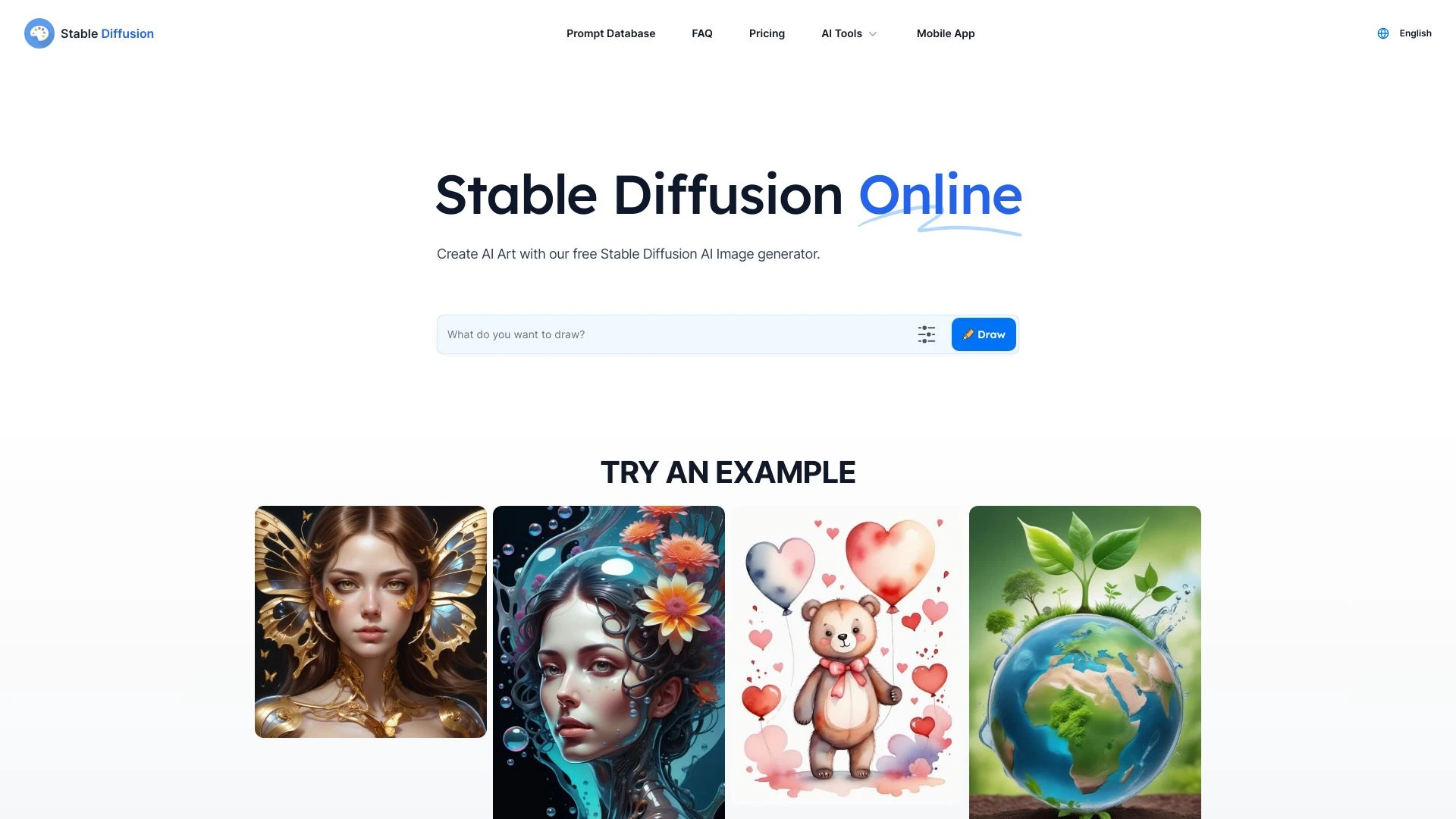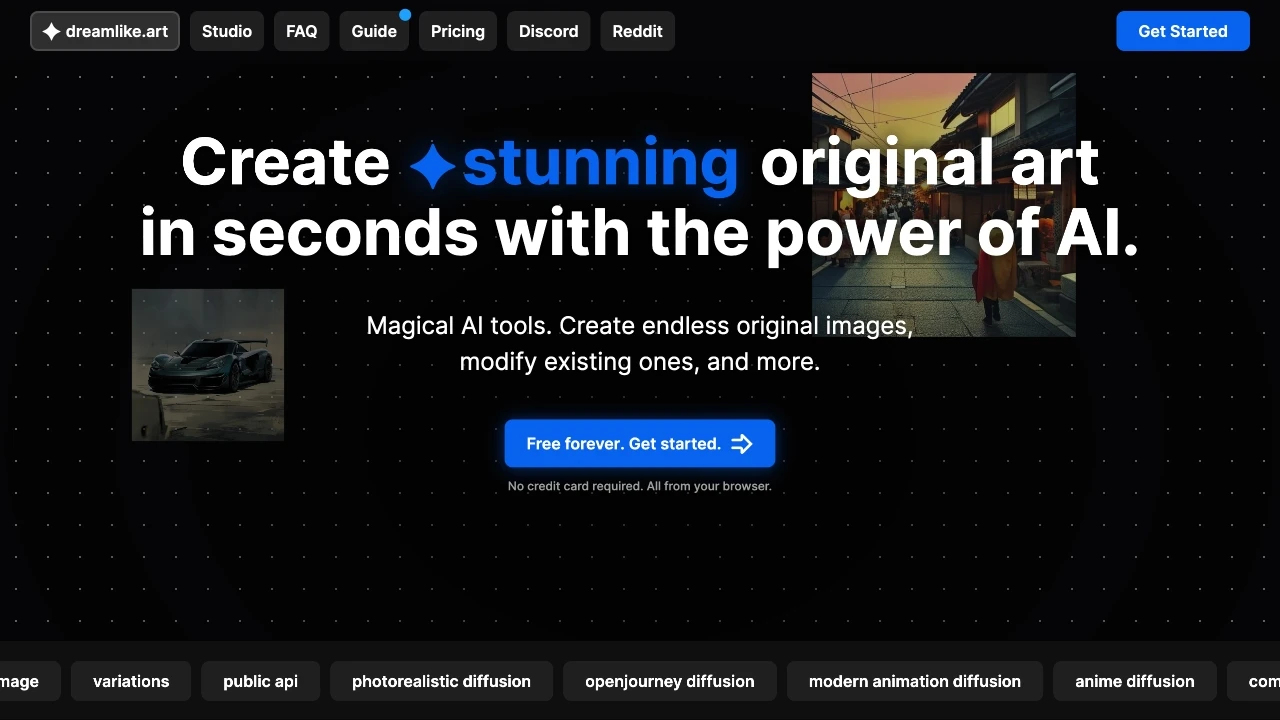Stable Diffusion Online versus Stable Diffusion
Stable Diffusion is an open-source AI model launched in August 2022 by Stability AI, focusing on generating high-quality images from text prompts. Stable Diffusion Online, a web-based application, caters to casual users seeking easy access to this technology without technical setup. Both serve artistic communities, but the former targets developers while the latter appeals to general users.


Stable Diffusion Online
Ideal For
Creating unique artwork
Visual content for marketing
Concept art for projects
Generating stock images
Key Strengths
Produces high-quality visuals
Fast and efficient image generation
Accessible for all skill levels
Core Features
High-quality image generation
GPU-enabled fast generation
User-friendly interface
Extensive artistic styles
Customizable prompts
Stable Diffusion
Ideal For
Creating artwork for personal or commercial use
Enhancing image quality through upscaling
Editing and rectifying facial features in photos
Generating unique variations of existing images
Key Strengths
Free to use
User-friendly interface
Quick image generation
Core Features
AI-powered image generation
Image upscaling
Face editing and fixing
Variations and customization
Multiple AI models
Popularity
Decision Matrix
| Factor | Stable Diffusion Online | Stable Diffusion |
|---|---|---|
| Ease of Use |
|
|
| Features |
|
|
| Value for Money |
|
|
| Interface Design |
|
|
| Learning Curve |
|
|
| Customization Options |
|
|
Quick Decision Guide
- You want fast and high-quality image generation.
- You aim for user-friendly interface and easy access.
- You value customization options for unique outputs.
- You look for community support and shared resources.
- You seek affordability without compromising on features.
- You want high-quality image generation from text prompts.
- You value open-source access for customization and flexibility.
- You aim for fast processing with efficient resource usage.
- You look for diverse creative outputs with unique styles.
- You want a strong community for support and shared resources.
What Our Experts Say
Stable Diffusion Online excels in accessibility and ease of use, making it ideal for quick, casual image generation. In contrast, Stable Diffusion offers greater customization and control, catering to advanced users needing specific output formats. Common challenges include online latency for Stable Diffusion Online and resource-intensive setup for Stable Diffusion. Ultimately, choose Online for speed and ease, while Stable Diffusion shines in precision and versatility for complex projects.
Jamie Davis
Software Analyst
At a Glance
Stable Diffusion Online offers a user-friendly interface for generating images without installation, ideal for casual users. In contrast, Stable Diffusion requires local setup, providing more customization and control for advanced users. Pros of Online: Easy access, no installation. Cons: Limited features, might face server load. Pros of Local: High customization, offline access. Cons: Steeper learning curve, requires sufficient hardware. Recommendation: Choose Online for quick, casual use; opt for Local for in-depth projects and customization.
Pricing and Subscription Plans
Stable Diffusion Online typically features tiered subscription plans starting at $10/month for basic access, scaling up to $50/month for advanced features like higher resolution outputs. Stable Diffusion, as an open-source model, incurs costs mainly through cloud hosting, varying based on usage. For small businesses, Online offers predictable pricing, while larger enterprises may prefer self-hosting for cost-effectiveness and customization.
Performance Metrics
Stable Diffusion Online generally offers faster image generation due to cloud-based processing, making it ideal for high-demand scenarios. In contrast, local Stable Diffusion provides more control and customization, leading to higher accuracy in specific tasks. Reliability benchmarks indicate that online versions depend on internet stability, while local models are consistently dependable.
User Experience
Stable Diffusion Online offers a streamlined interface, emphasizing ease of access for users. Its navigation is straightforward, making it user-friendly. Customizability is limited compared to the standalone Stable Diffusion, which allows more in-depth configuration. The learning curve for Online is gentle, while the standalone may require a steeper learning curve for advanced features. User support for Online is typically more robust, offering tutorials and community forums, whereas standalone support is often less centralized.
Integrations and Compatibility
Stable Diffusion Online seamlessly integrates with various third-party apps like Discord and Google Colab, enhancing collaboration and functionality. Meanwhile, Stable Diffusion offers API support for custom implementations and broader system compatibility, catering to diverse workflows.
Limitations and Drawbacks
Stable Diffusion Online faces latency and accessibility issues due to server reliance, while local Stable Diffusion struggles with hardware requirements. Both may produce artifacting in images. Workarounds include using local models for extensive customization and cloud services for ease.